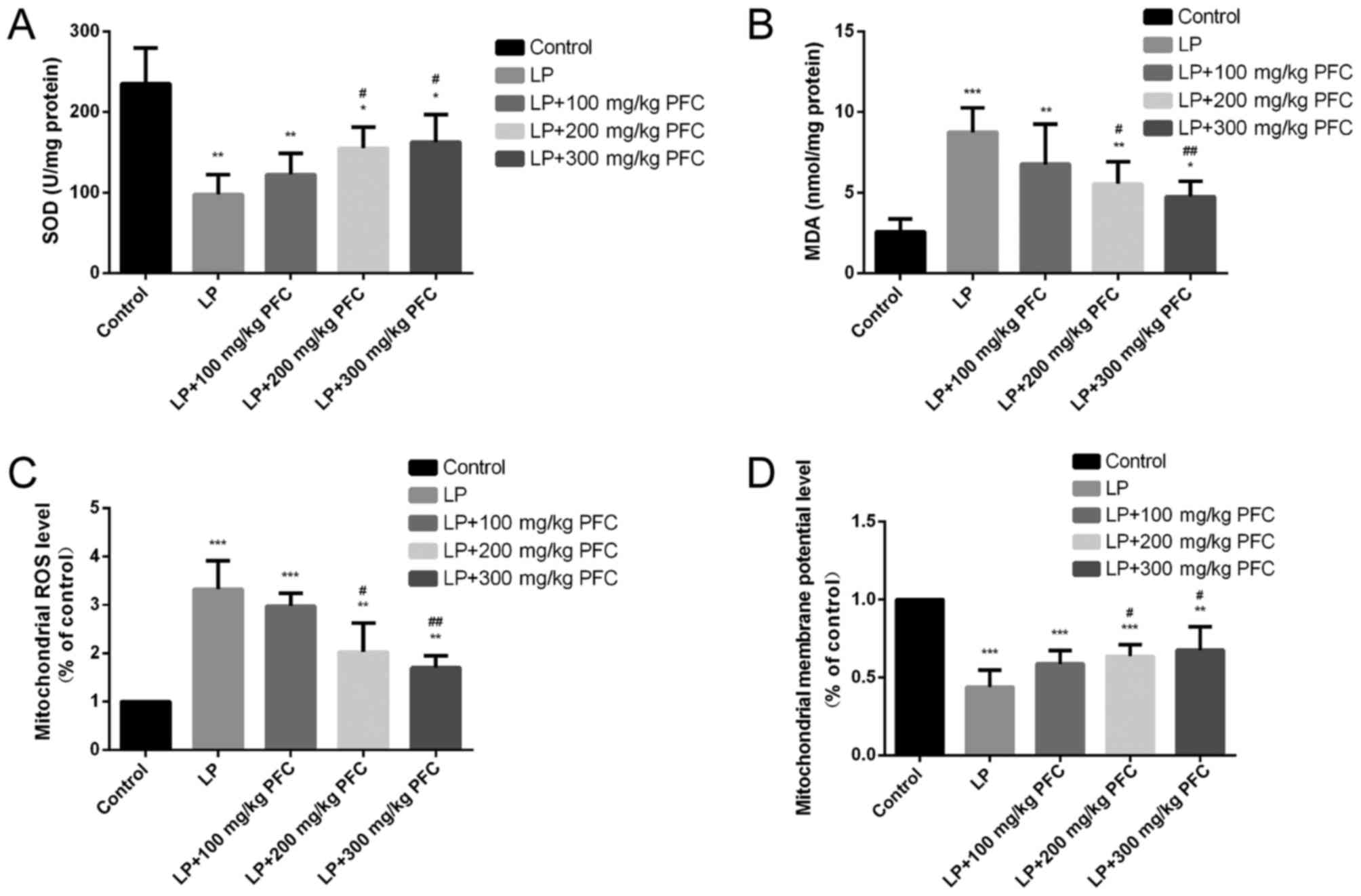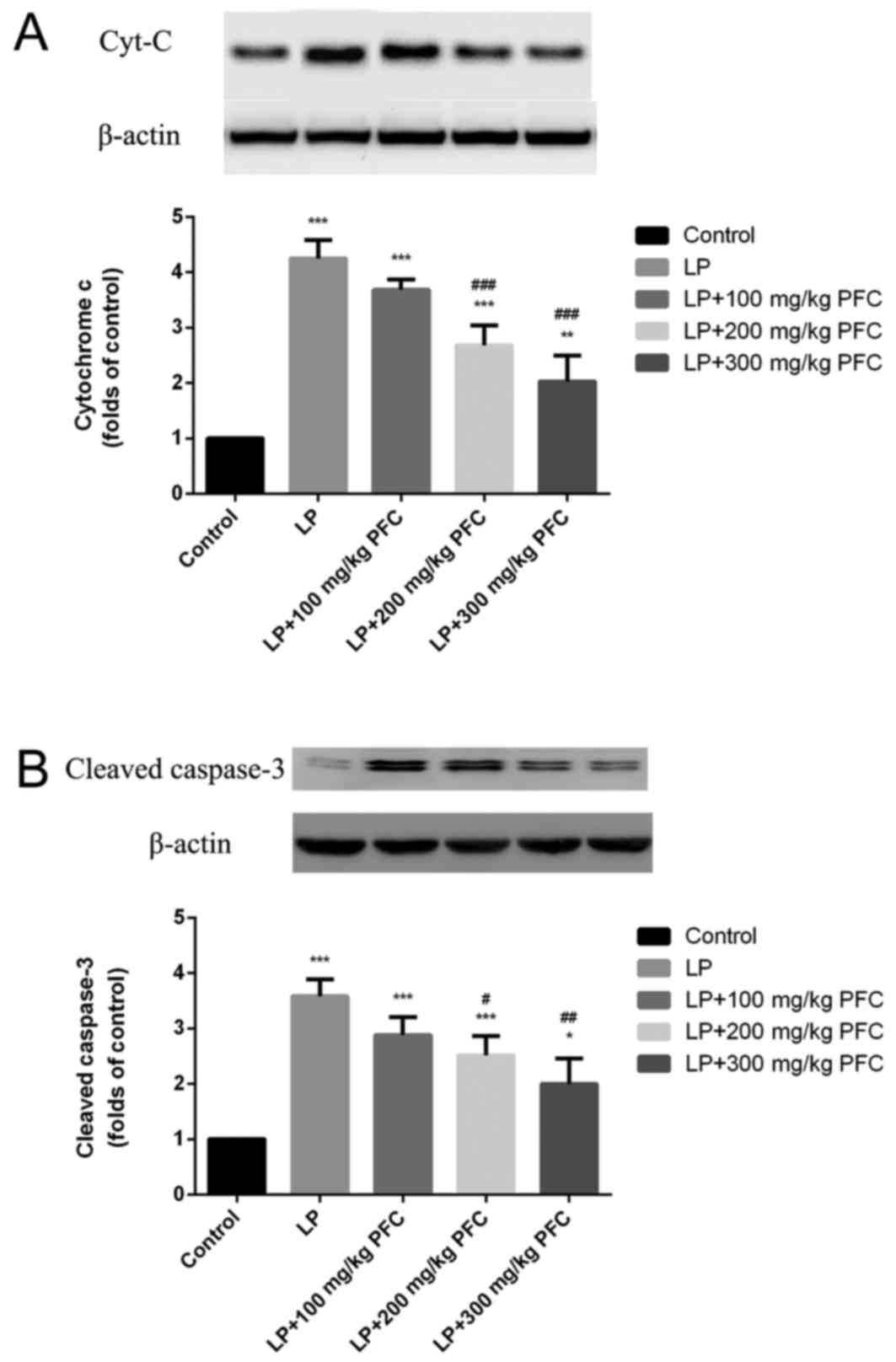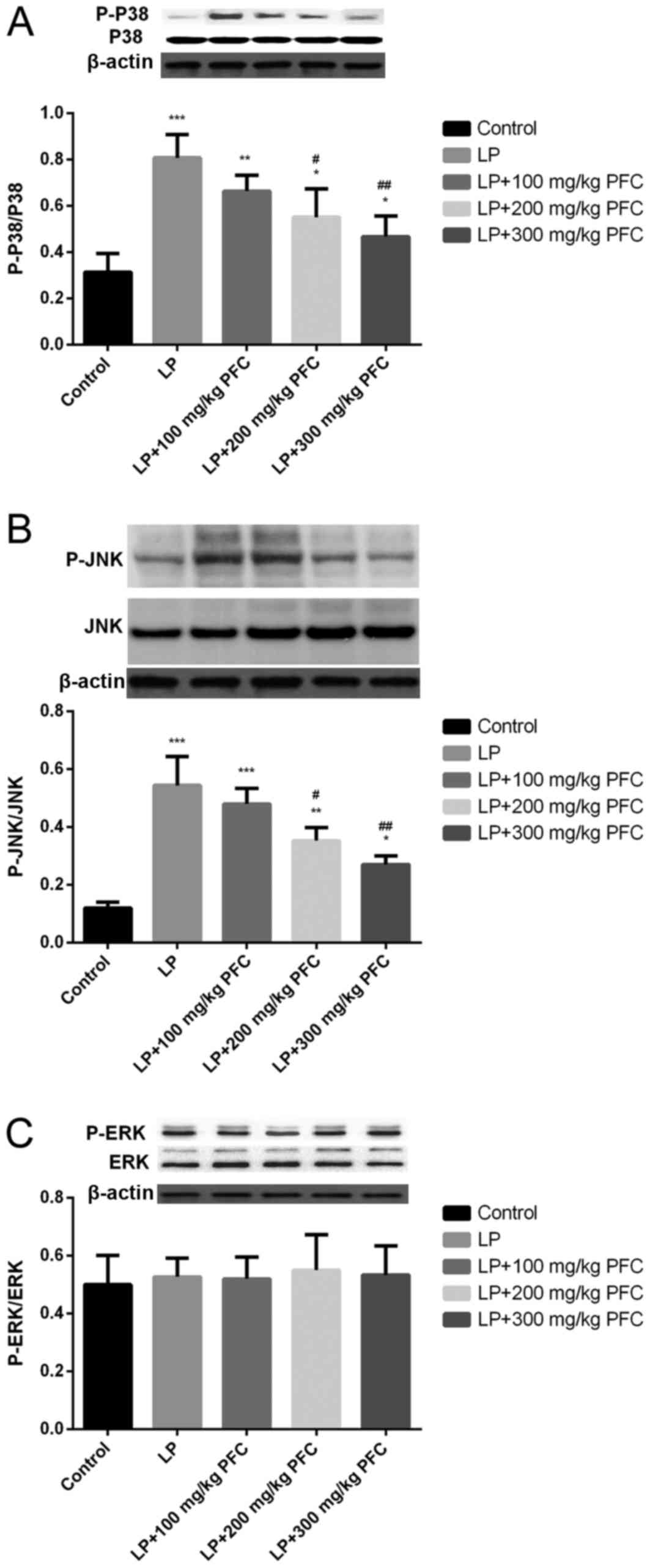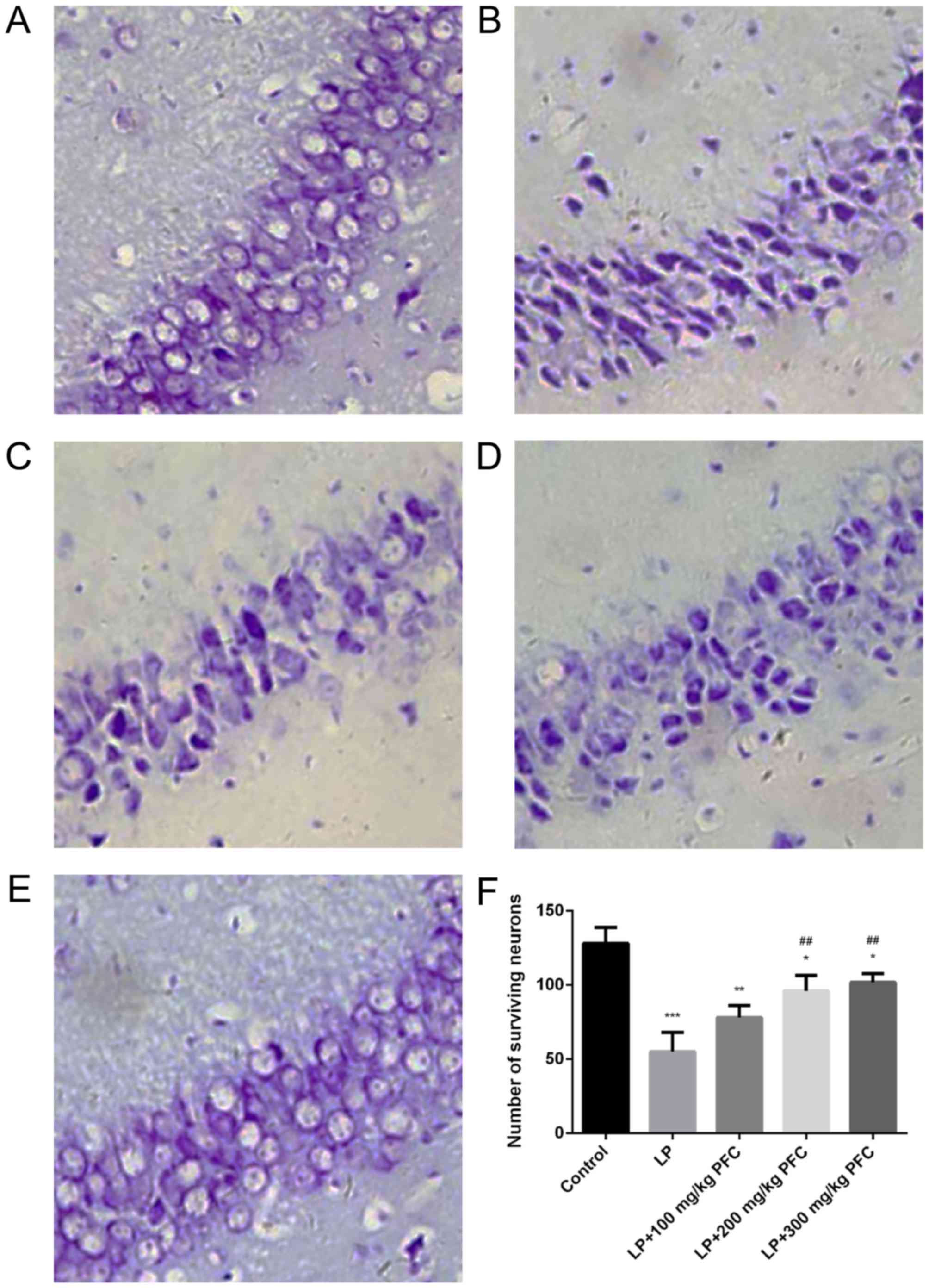|
1
|
Chen J, Liu XM, Yue X and Chen SZ: The
clinical efficacy and safety of levetiracetam add-on therapy for
child refractory epilepsy. Eur Rev Med Pharmacol Sci. 20:2689–2694.
2016.PubMed/NCBI
|
|
2
|
Azakli H, Gurses C, Arikan M, Aydoseli A,
Aras Y, Sencer A, Gokyigit A, Bilgic B and Ustek D: Whole
mitochondrial DNA variations in hippocampal surgical specimens and
blood samples with high-throughput sequencing: A case of mesial
temporal lobe epilepsy with hippocampal sclerosis. Gene.
529:190–194. 2013. View Article : Google Scholar : PubMed/NCBI
|
|
3
|
Mehla J, Reeta KH, Gupta P and Gupta YK:
Protective effect of curcumin against seizures and cognitive
impairment in a pentylenetetrazole-kindled epileptic rat model.
Life Sci. 87:596–603. 2010. View Article : Google Scholar : PubMed/NCBI
|
|
4
|
Valko M, Rhodes CJ, Moncol J, Izakovic M
and Mazur M: Free radicals, metals and antioxidants in oxidative
stress-induced cancer. Chem Biol Interact. 160:1–40. 2006.
View Article : Google Scholar : PubMed/NCBI
|
|
5
|
Hass DT and Barnstable CJ: Uncoupling
protein 2 in the glial response to stress: Implications for
neuroprotection. Neural Regen Res. 11:1197–1200. 2016. View Article : Google Scholar : PubMed/NCBI
|
|
6
|
Baille V, Clarke PG, Brochier G, Dorandeu
F, Verna JM, Four E, Lallement G and Carpentier P: Soman-induced
convulsions: The neuropathology revisited. Toxicology. 215:1–24.
2005. View Article : Google Scholar : PubMed/NCBI
|
|
7
|
Sfaello I, Baud O, Arzimanoglou A and
Gressens P: Topiramate prevents excitotoxic damage in the newborn
rodent brain. Neurobiol Dis. 20:837–848. 2005. View Article : Google Scholar : PubMed/NCBI
|
|
8
|
Lee KY, Bae ON, Weinstock S, Kassab M and
Majid A: Neuroprotective effect of asiatic acid in rat model of
focal embolic stroke. Biol Pharm Bull. 37:1397–1401. 2014.
View Article : Google Scholar : PubMed/NCBI
|
|
9
|
Petrosillo G, Ruggiero FM, Di Venosa N and
Paradies G: Decreased complex III activity in mitochondria isolated
from rat heart subjected to ischemia and reperfusion: role of
reactive oxygen species and cardiolipin. FASEB J. 17:714–716. 2003.
View Article : Google Scholar : PubMed/NCBI
|
|
10
|
Liu B, Tewari AK, Zhang L, Green-Church
KB, Zweier JL, Chen YR and He G: Proteomic analysis of protein
tyrosine nitration after ischemia reperfusion injury: Mitochondria
as the major target. Biochim Biophys Acta. 1794:476–485. 2009.
View Article : Google Scholar : PubMed/NCBI
|
|
11
|
Peng Q, Wei Z and Lau BH: Fructus corni
enhances endothelial cell antioxidant defenses. Gen Pharmacol.
31:221–225. 1998. View Article : Google Scholar : PubMed/NCBI
|
|
12
|
Chen CC, Hsu CY, Chen CY and Liu HK:
Fructus Corni suppresses hepatic gluconeogenesis related gene
transcription, enhances glucose responsiveness of pancreatic
beta-cells, and prevents toxin induced beta-cell death. J
Ethnopharmacol. 117:483–490. 2008. View Article : Google Scholar : PubMed/NCBI
|
|
13
|
Wu Y, Wang X, Shen B, Kang L and Fan E:
Extraction, structure and bioactivities of the polysaccharides from
Fructus corni. Recent Pat Food Nutr Agric. 5:57–61. 2013.
View Article : Google Scholar : PubMed/NCBI
|
|
14
|
Racine RJ: Modification of seizure
activity by electrical stimulation. II. Motor seizure.
Electroencephalogr Clin Neurophysiol. 32:281–294. 1972. View Article : Google Scholar : PubMed/NCBI
|
|
15
|
Wang D, Ren M, Guo J, Yang G, Long X, Hu
R, Shen W, Wang X and Zeng K: The inhibitory effects of Npas4 on
seizures in pilocarpine-induced epileptic rats. PLoS One.
9:e1158012014. View Article : Google Scholar : PubMed/NCBI
|
|
16
|
Thummasorn S, Kumfu S, Chattipakorn S and
Chattipakorn N: Granulocyte-colony stimulating factor attenuates
mitochondrial dysfunction induced by oxidative stress in cardiac
mitochondria. Mitochondrion. 11:457–466. 2011. View Article : Google Scholar : PubMed/NCBI
|
|
17
|
Qi J, Hong ZY, Xin H and Zhu YZ:
Neuroprotective effects of leonurine on
ischemia/reperfusion-induced mitochondrial dysfunctions in rat
cerebral cortex. Biol Pharm Bull. 33:1958–1964. 2010. View Article : Google Scholar : PubMed/NCBI
|
|
18
|
Buchan A and Pulsinelli WA: Hypothermia
but not the N-methyl-D-aspartate antagonist, MK-801, attenuates
neuronal damage in gerbils subjected to transient global ischemia.
J Neurosci. 10:311–316. 1990. View Article : Google Scholar : PubMed/NCBI
|
|
19
|
Kirino T, Tamura A, Tomukai N and Sano K:
Treatable ischemic neuronal damage in the gerbil hippocampus. No To
Shinkei. 38:1157–1163. 1986.(In Japanese). PubMed/NCBI
|
|
20
|
Xie N, Li H, Wei D, LeSage G, Chen L, Wang
S, Zhang Y, Chi L, Ferslew K, He L, et al: Glycogen synthase
kinase-3 and p38 MAPK are required for opioid-induced microglia
apoptosis. Neuropharmacology. 59:444–451. 2010. View Article : Google Scholar : PubMed/NCBI
|
|
21
|
Cardenas-Rodriguez N, Huerta-Gertrudis B,
Rivera-Espinosa L, Montesinos-Correa H, Bandala C, Carmona-Aparicio
L and Coballase-Urrutia E: Role of oxidative stress in refractory
epilepsy: Evidence in patients and experimental models. Int J Mol
Sci. 14:1455–1476. 2013. View Article : Google Scholar : PubMed/NCBI
|
|
22
|
Henshall DC: Apoptosis signalling pathways
in seizure-induced neuronal death and epilepsy. Biochem Soc Trans.
35:421–423. 2007. View Article : Google Scholar : PubMed/NCBI
|
|
23
|
Bielli A, Scioli MG, Mazzaglia D, Doldo E
and Orlandi A: Antioxidants and vascular health. Life Sci.
143:209–216. 2015. View Article : Google Scholar : PubMed/NCBI
|
|
24
|
Vishnoi S, Raisuddin S and Parvez S:
Glutamate excitotoxicity and oxidative stress in epilepsy:
Modulatory role of melatonin. J Environ Pathol Toxicol Oncol.
35:365–374. 2016. View Article : Google Scholar : PubMed/NCBI
|
|
25
|
Zhong H, Lu J, Xia L, Zhu M and Yin H:
Formation of electrophilic oxidation products from mitochondrial
cardiolipin in vitro and in vivo in the context of apoptosis and
atherosclerosis. Redox Biol. 2:878–883. 2014. View Article : Google Scholar : PubMed/NCBI
|
|
26
|
Crouser ED and Parinandi N: Mitochondrial
mechanisms are at the ‘heart’ of novel ischemia-reperfusion
therapies. Crit Care Med. 39:593–595. 2011. View Article : Google Scholar : PubMed/NCBI
|
|
27
|
Yao K, Ye P, Zhang L, Tan J, Tang X and
Zhang Y: Epigallocatechin gallate protects against oxidative
stress-induced mitochondria-dependent apoptosis in human lens
epithelial cells. Mol Vis. 14:217–223. 2008.PubMed/NCBI
|
|
28
|
Ganie SA, Dar TA, Bhat AH, Dar KB, Anees
S, Zargar MA and Masood A: Melatonin: A potential anti-oxidant
therapeutic agent for mitochondrial dysfunctions and related
disorders. Rejuvenation Res. 19:21–40. 2016. View Article : Google Scholar : PubMed/NCBI
|
|
29
|
Ralph SJ, Pritchard R, Rodríguez-Enríquez
S, Moreno-Sánchez R and Ralph RK: Hitting the bull's-eye in
metastatic cancers-NSAIDs elevate ROS in mitochondria, inducing
malignant cell death. Pharmaceuticals (Basel). 8:62–106. 2015.
View Article : Google Scholar : PubMed/NCBI
|
|
30
|
Brenner D and Mak TW: Mitochondrial cell
death effectors. Curr Opin Cell Biol. 21:871–877. 2009. View Article : Google Scholar : PubMed/NCBI
|
|
31
|
Wang X: The expanding role of mitochondria
in apoptosis. Genes Dev. 15:2922–2933. 2001.PubMed/NCBI
|
|
32
|
Alvarez-Jaimes L, Feliciano-Rivera M,
Centeno-González M and Maldonado-Vlaar CS: Contributions of the
mitogen-activated protein kinase and protein kinase C cascades in
spatial learning and memory mediated by the nucleus accumbens. J
Pharmacol Exp Ther. 314:1144–1157. 2005. View Article : Google Scholar : PubMed/NCBI
|
|
33
|
DeGiorgio CM, Tomiyasu U, Gott PS and
Treiman DM: Hippocampal pyramidal cell loss in human status
epilepticus. Epilepsia. 33:23–27. 1992. View Article : Google Scholar : PubMed/NCBI
|
|
34
|
Mikati MA, Abi-Habib RJ, El Sabban ME,
Dbaibo GS, Kurdi RM, Kobeissi M, Farhat F and Asaad W: Hippocampal
programmed cell death after status epilepticus: evidence for
NMDA-receptor and ceramide-mediated mechanisms. Epilepsia.
44:282–291. 2003. View Article : Google Scholar : PubMed/NCBI
|
|
35
|
Spragg DD, Akar FG, Helm RH, Tunin RS,
Tomaselli GF and Kass DA: Abnormal conduction and repolarization in
late-activated myocardium of dyssynchronously contracting hearts.
Cardiovasc Res. 67:77–86. 2005. View Article : Google Scholar : PubMed/NCBI
|
|
36
|
Gard JJ, Yamada K, Green KG, Eloff BC,
Rosenbaum DS, Wang X, Robbins J, Schuessler RB, Yamada KA and
Saffitz JE: Remodeling of gap junctions and slow conduction in a
mouse model of desmin-related cardiomyopathy. Cardiovasc Res.
67:539–547. 2005. View Article : Google Scholar : PubMed/NCBI
|
|
37
|
Arimoto K, Fukuda H, Imajoh-Ohmi S, Saito
H and Takekawa M: Formation of stress granules inhibits apoptosis
by suppressing stress-responsive MAPK pathways. Nat Cell Biol.
10:1324–1332. 2008. View
Article : Google Scholar : PubMed/NCBI
|
|
38
|
Son Y, Cheong YK, Kim NH, Chung HT, Kang
DG and Pae HO: Mitogen-activated protein kinases and reactive
oxygen species: How can ROS activate MAPK pathways? J Signal
Transduct. 2011:7926392011. View Article : Google Scholar : PubMed/NCBI
|
|
39
|
Ledirac N, Antherieu S, D'Uby AD, Caron JC
and Rahmani R: Effects of organochlorine insecticides on MAP kinase
pathways in human HaCaT keratinocytes: Key role of reactive oxygen
species. Toxicol Sci. 86:444–452. 2005. View Article : Google Scholar : PubMed/NCBI
|
|
40
|
Shao X, Luo Q, Qin Q, Qiu G and Li Z:
Effect of fructus corni polysaccharides on damaged sexual function
of male rats. Zhongguo Zhong Yao Za Zhi. 35:772–775. 2010.(In
Chinese). PubMed/NCBI
|
|
41
|
Yamabe N, Kang KS, Goto E, Tanaka T and
Yokozawa T: Beneficial effect of Corni Fructus, a constituent of
Hachimi-jio-gan, on advanced glycation end-product-mediated renal
injury in Streptozotocin-treated diabetic rats. Biol Pharm Bull.
30:520–526. 2007. View Article : Google Scholar : PubMed/NCBI
|
|
42
|
Duan Y, Pei K, Cai H, Tu S, Zhang Z, Cheng
X, Qiao F, Fan K, Qin K, Liu X and Cai B: Bioactivity
evaluation-based ultra high-performance liquid chromatography
coupled with electrospray ionization tandem
quadrupole-time-of-flight mass spectrometry and novel distinction
of multi-subchemome compatibility recognition strategy with
Astragali Radix-Fructus Corni herb-pair as a case study. J Pharm
Biomed Anal. 129:514–534. 2016. View Article : Google Scholar : PubMed/NCBI
|
|
43
|
Wang X, Liu J, Jin NA, Xu D, Wang J, Han Y
and Yin N: Fructus Corni extract-induced neuritogenesis in PC12
cells is associated with the suppression of stromal interaction
molecule 1 expression and inhibition of Ca2+ influx. Exp
Ther Med. 9:1773–1779. 2015. View Article : Google Scholar : PubMed/NCBI
|


















